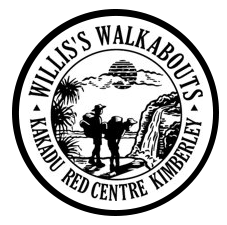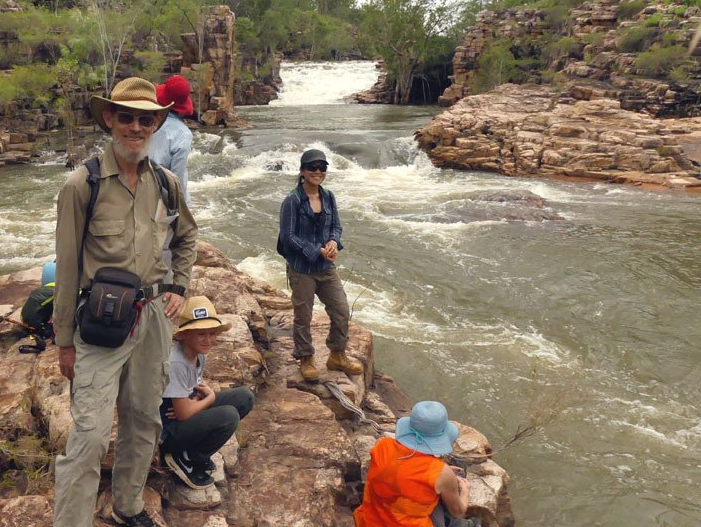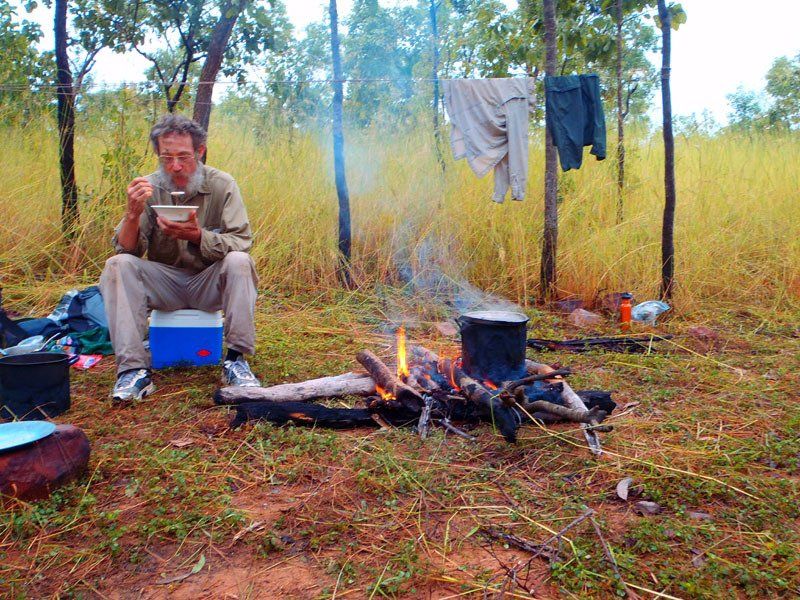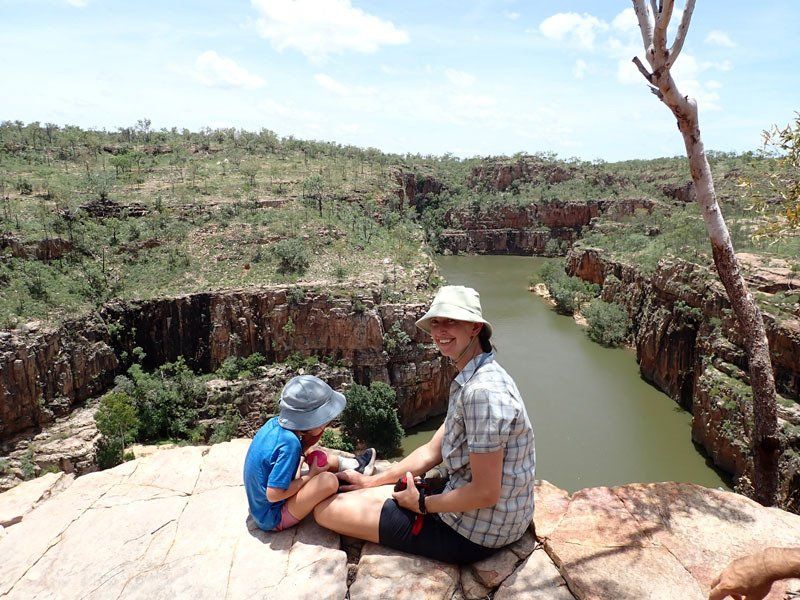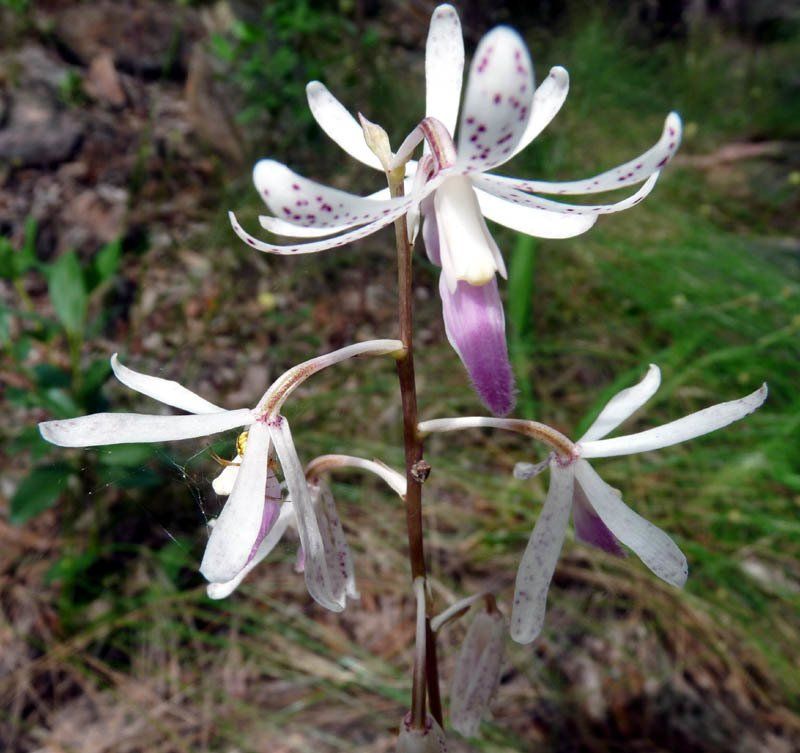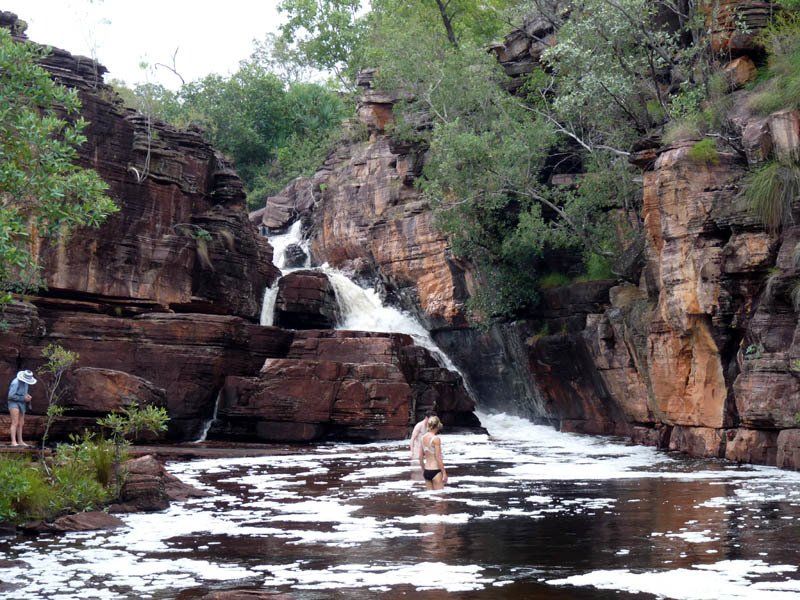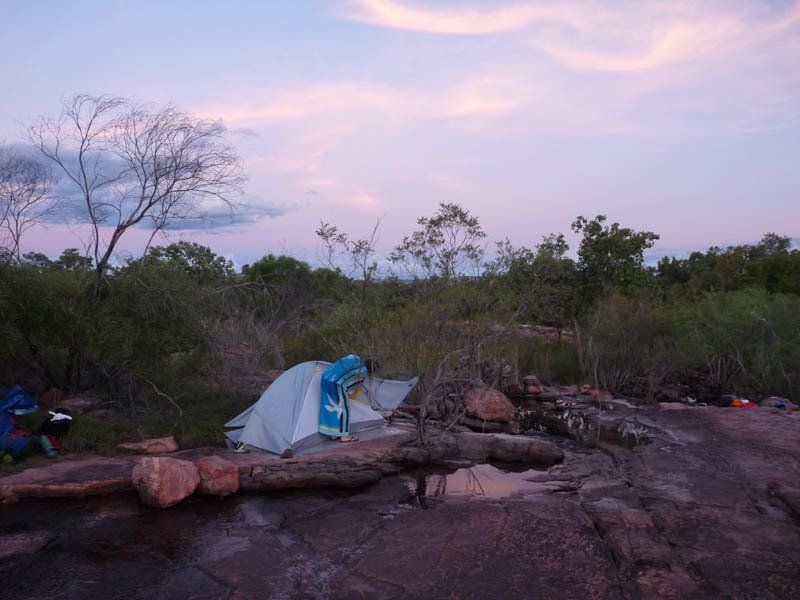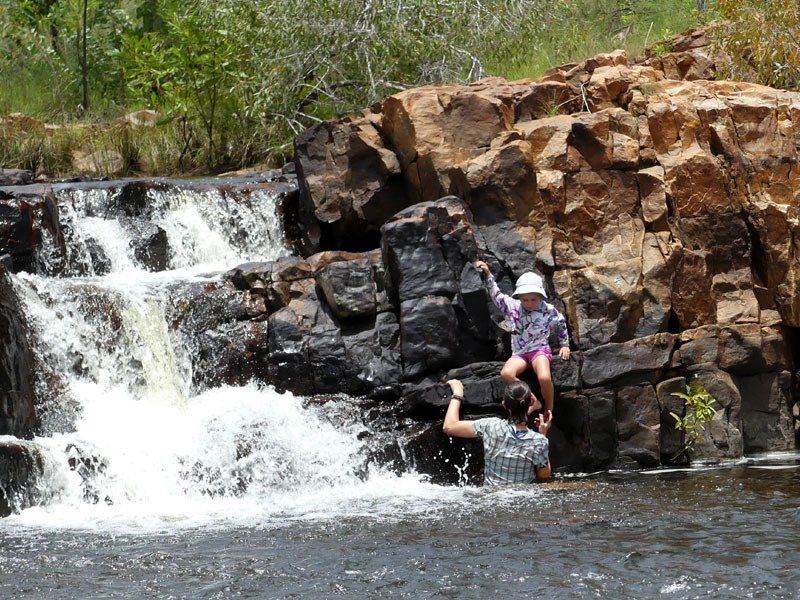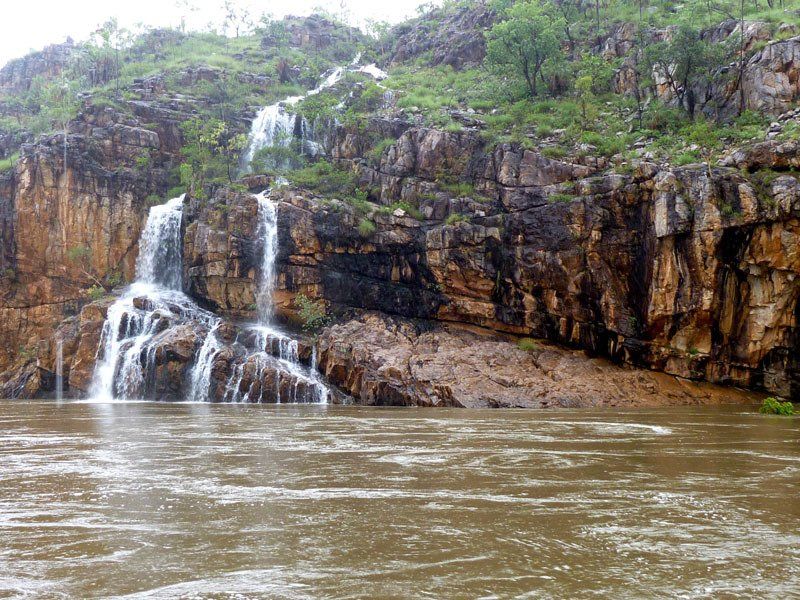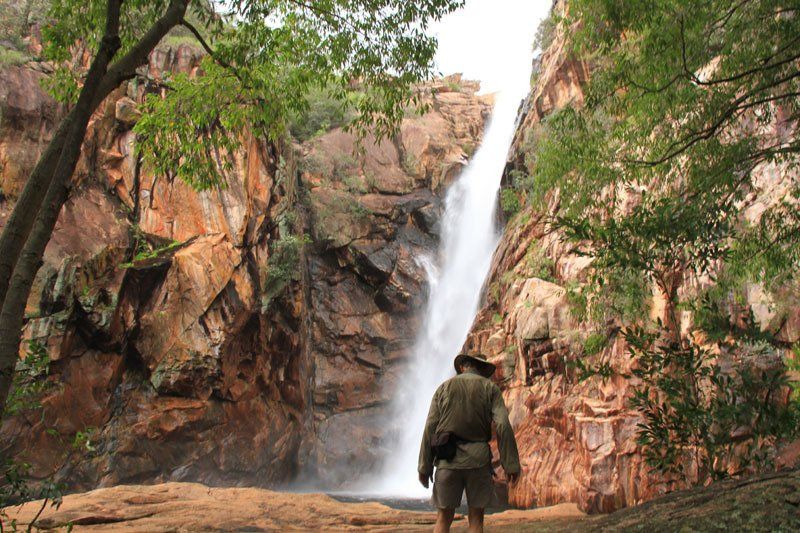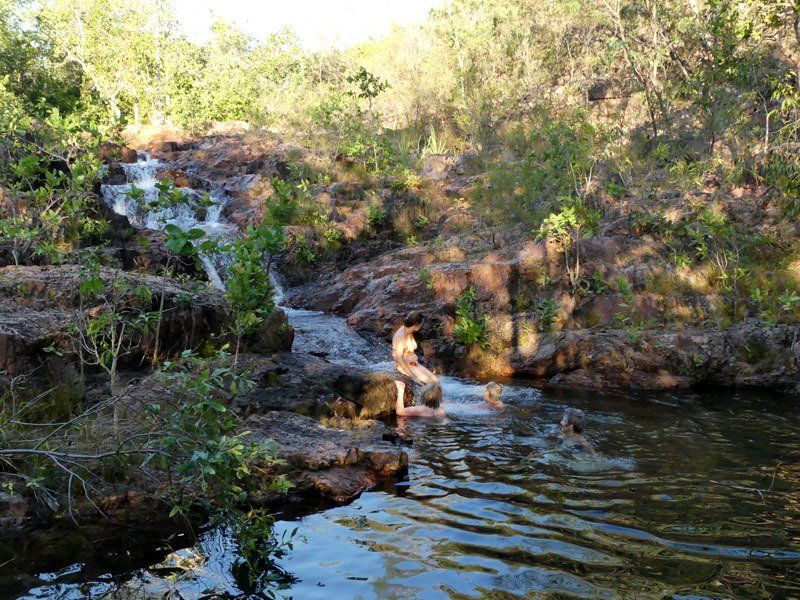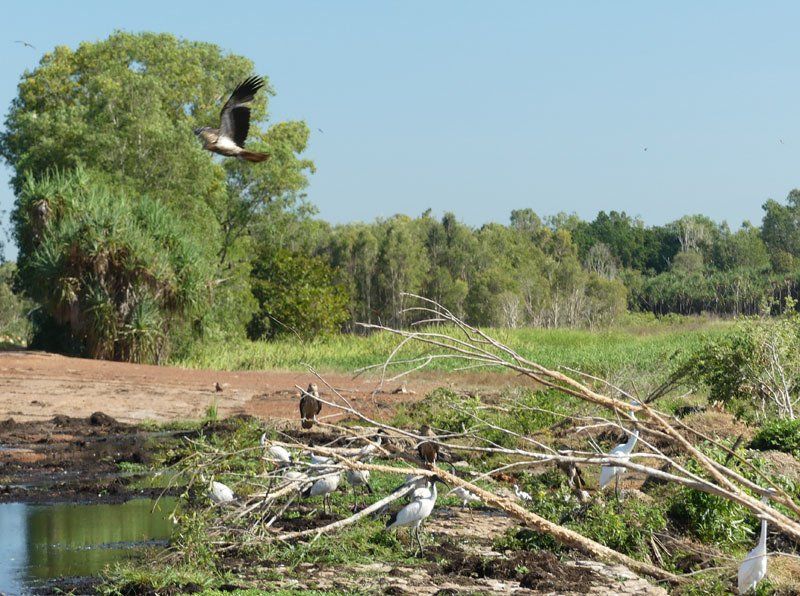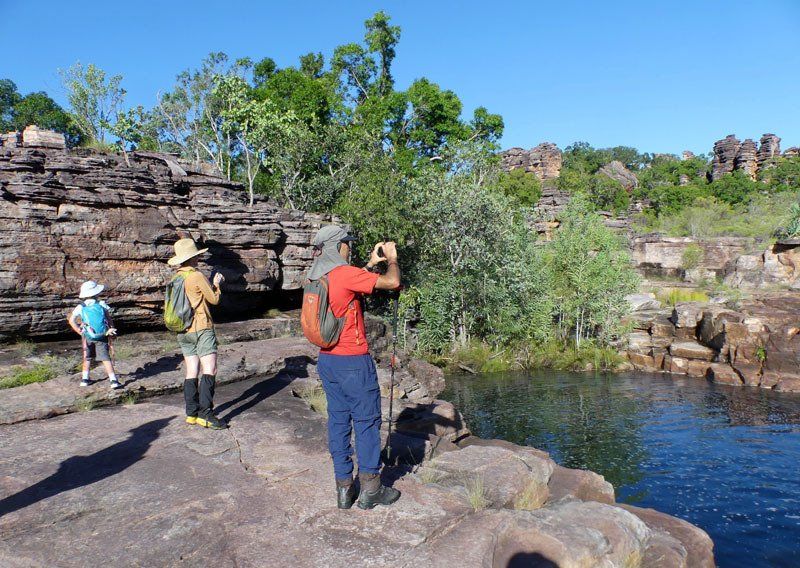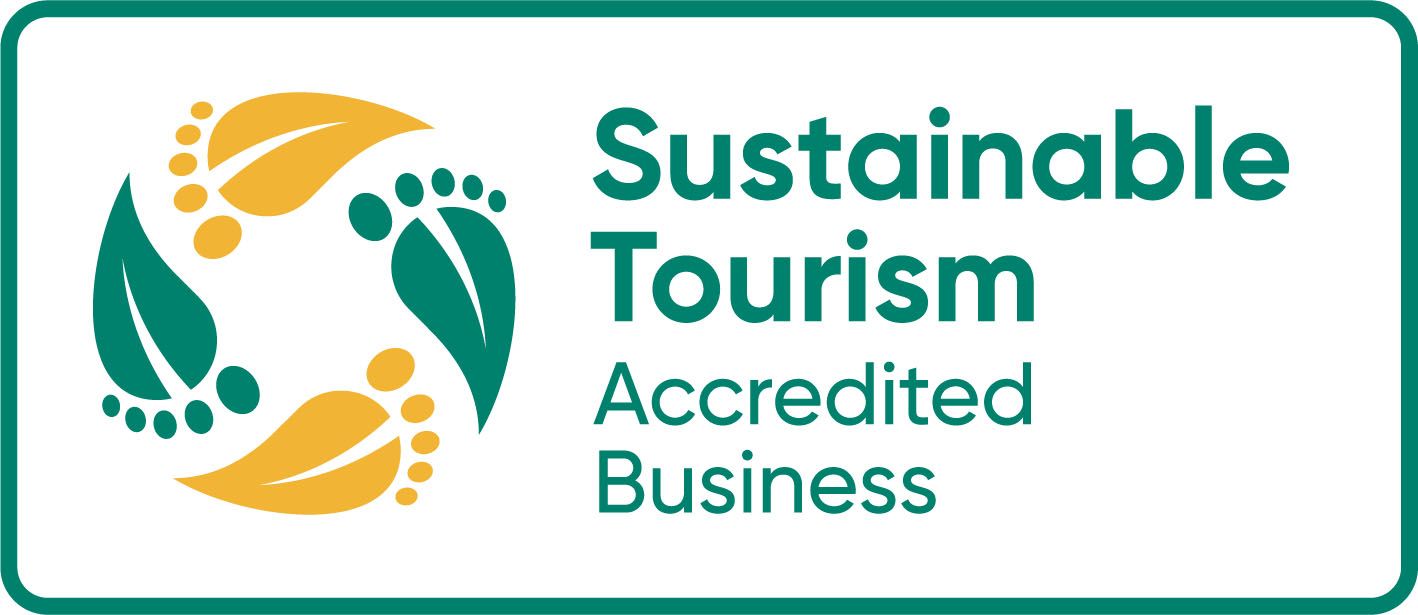EXPERIENCES / KAKADU
Kakadu Light
Overview
Walk the wonder of Kakadu in the Wet.
Enjoy the spectacular waterfalls and wildflowers by day. Relax in comfortable accommodation most nights, camp next to secluded bush pools after short walks on the others.
Two sections, either of which can be done on its own.
- Kakadu - a mix of well known places and others that non-walkers will never get to see.
- Nitmiluk, Litchfield and the Wildlife Park.
Dry season visitors never see anything like this. Every waterfall will be flowing, the landscape will be lush and green. Better still, we should have most of our swimming pools to ourselves.
Section 1: Kakadu
With maximum temperatures in the mid 30's and nightly minimum temperatures in the mid 20's, our first day will be an easy one to allow the group to acclimatise. We begin with the 300 km drive from Darwin to Kakadu which normally takes three to three and a half hours. We’ll take longer because we’ll be stopping. We spend our first night in accommodation in Jabiru.
Next day, we head off early to Kubara (Baroalba Springs). A 3 km walk along an old 4WD track brings us to Kubara and the first of our swims for the day. If water levels permit, we will carry overnight packs with us, then do another 2½ km to a two-night camp from which we can explore some of the many art sites, something which would be impossible on a day walk.
We return to the vehicles and drive a short distance to Burrungkuy (Nourlangie Rock), one of the most visited places in Kakadu.
We return to the vehicles and drive a short distance to Burrungkuy (Nourlangie Rock), one of the most visited places in Kakadu.
Few of those who visit do so at this time of year when the land is lush and green and the billabongs are full. We visit a number of art sites and enjoy some magnificent views out across the surrounding plains.
If water levels permit, we will do the Guluyambi Aboriginal cultural tour the next day. This tour combines a wetland cruise and a visit to Ubirr. Guluyambi brings you the relationship between Aboriginal people and their land, their culture. This particular tour is only offered for about two months per year when high water on the Magela floodplain gives access to a wetland seen by only a few.
If water levels permit, we will do the Guluyambi Aboriginal cultural tour the next day. This tour combines a wetland cruise and a visit to Ubirr. Guluyambi brings you the relationship between Aboriginal people and their land, their culture. This particular tour is only offered for about two months per year when high water on the Magela floodplain gives access to a wetland seen by only a few.
We spend the night at Cooinda and do a Yellow Waters cruise the next morning.
From Cooinda, we drive to the southern part of the park and begin the overnight Yurmikmik walk. This walk takes us to the largest of the Kakadu waterfalls which are reasonably accessible at this time of year.
Next day, we do the 180 kilometre drive to Katherine where we spend the night.
Section 2: Nitmiluk & more
From Katherine, we drive to the park where we do a scenic walk to the Southern Rockhole where we get picked up by a boat.
The next day we head north, stopping at Edith Falls, a series of drops over a distance of about a kilometre. Above the falls there are deep, inviting pools where we will spend a great deal of the day before driving on to Pine Creek.
The next day we head to Depot Creek where we find a wonderful small gorge unknown even to most locals. You will learn why owner Russell Willis has run regular overnight wet season trips there for the Darwin Bushwalking club for the past ten years.
We'll set up camp, then spend the rest of the day exploring the gorge.
From Depot, we drive to Batchelor for two nights and the beginning of our visits to Litchfield's many waterfalls.
On the second last day, we visit more of the Litchfield waterfalls before driving to Berry Springs.
On the final day, we visit the Territory Wildlife Park, a zoo with a difference as it highlights only the animals native to our region. You can see all of the animals, including the nocturnal ones, that have been unseen around you for most of the last 13 days.
We spend half a day there before returning to Darwin where you are dropped off at your accommodation.
Details
DATES
Feb 15-28
Sec 1: Feb 15-22
Sec 2: Feb 21-28
PRICES
Full price: A4995
Sec 1: A$2995
Sec 2: A$2995
*Huge discount available. Additional expenses will apply. See PDF trip notes for details.
GROUP SIZE
4 - 12 guests
CAMP SITE
Mostly accommodated. Our overnight camps will be on sand, rock ledges or grassy areas depending on water levels at the time.
ART
We visit a variety of art sites
SWIMMING
This is the best time to see the Top End waterfalls. We will have good pools at almost every campsite and lunch spot.
WILDLIFE
Birds are always present but spread out at this time of year. You are unlikely to see many large animals. The Yellow Waters cruise is excellent for birds, many of which you are unlikely to see on the walk. It also gives you a good chance to see large estaurine crocodiles.
CLIMATE
It will be hot (although not as hot as you might think) and it will be humid. The average daily maximum is 33-34ºC (91-94ºF). If we get a spell of relatively dry weather, the temperature could reach 40ºC (104ºF). The average minimum is 24ºC (75ºF). Sleeping bags are not needed. Rain is almost certain. On average it will rain two days out of three, mostly in short, sharp bursts. Averages can, however, be misleading. Occasionally, it might rain for days at a time. (This makes it somewhat harder to walk but it also makes the waterfalls more spectacular and keeps it relatively cool.) Occasionally, it may rain very little. This makes it substantially hotter than normal. There will be many opportunities to swim and cool off, but you must be prepared for hot, humid conditions.
COOKING
In spite of the wet weather, we will have campfires on our overnight walks and hot water available every morning.
WALK RATING - MODERATE
Terrain
Section 1. Although some sections of these walks are fairly flat and straightforward, most of the walking is off-trail. There are some longish sections of rock scrambling and a couple of short but sharp climbs. If you have never done this before, you may find this fairly difficult.
Section 2. Most of the walking on this section is on marked trails. Some will be off-trail and may include a bit of rock-hopping.
Vegetation
Much of the walking is through relatively flat, open woodland with a grassy understorey. Some short sections of grass may hide a broken rocky surface where you will have to be particularly careful. There may be some slow sections where you will have to pass though thick scrub. The vegetation can vary from year to year depending on when last burnt. Much of section two is on trails where the vegetation is not much of a problem.
Distance
Generally 4-6 hours, not including breaks. A few days might be longer.
Pack Weight
You need to carry a day pack most of the time, two days food on the longest walk.
Download detailed trip notesDon't even THINK about booking this trip until you have read these notes.
15-28 Feb
Download
Itinerary
*This itinerary is subject to change
